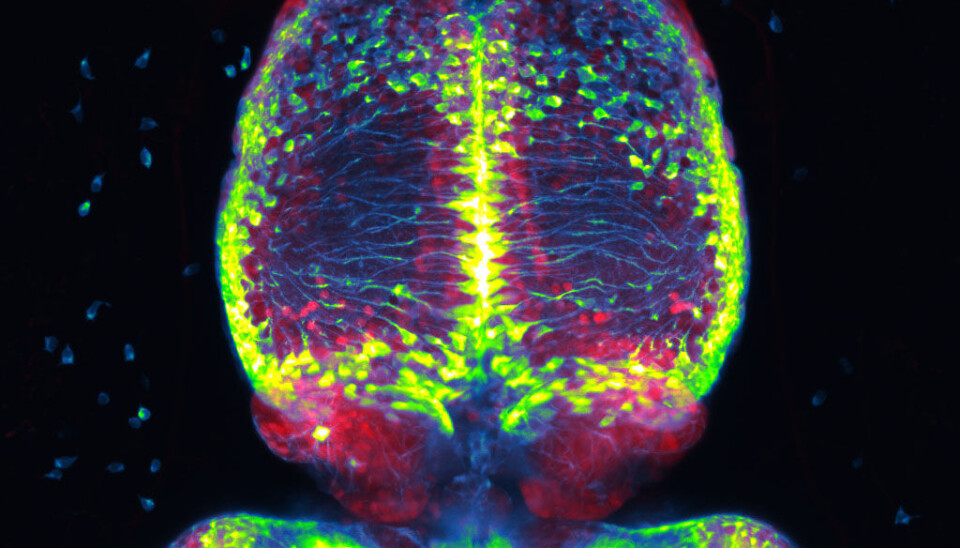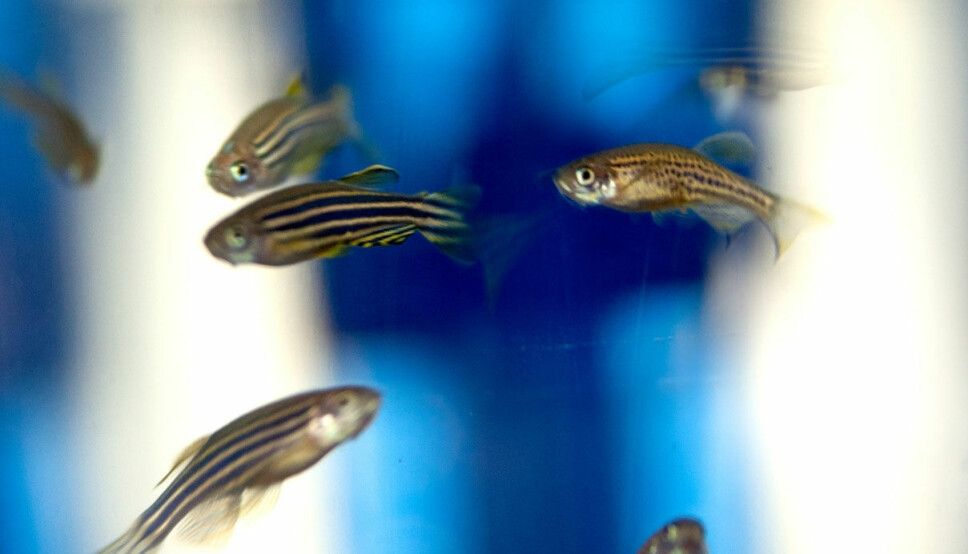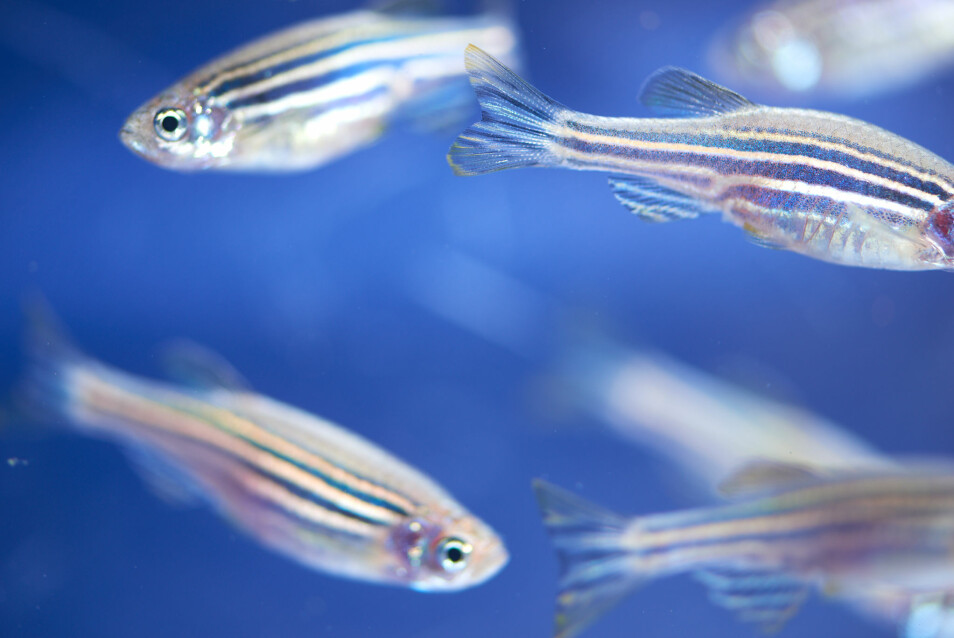
Researchers get a hint about how the brain matures
What really happens in the brain when a baby suddenly starts to smile? Or when a toddler from one day to the next becomes interested in playing with other children? Norwegian researchers believe they’ve discovered a clue from creatures that are completely different from us.
“The advantage is that these creatures aren’t hiding inside a uterus. And that they’re transparent,” says Professor Emre Yaksi from the Kavli Institute for Systems Neuroscience (KISN).
He is referring to zebrafish embryos – tiny glassy creatures, floating inside equally transparent eggs.
They develop so fast that you can almost see it happen. With a good microscope, researchers can follow when individual cells divide and become several cells. They can detect when these cells organize themselves and form tissues and organs.
Yaksi and his colleagues are particularly interested in one of these organs.
The brain.
It may tell us something about our own.
Step-by-step development
We know from observation that the brain develops step-by-step.
Newborn babies are hardly more than eating machines. But then they fix their gaze and see. And a little later they smile for the first time. Then they learn to play alone, before one day they open their eyes to the playmates around them.
Twenty years later, the ability to fully gauge consequences is awakened. And so the development continues.
For this to happen, the brain needs to mature. It needs to add new and more advanced skills. But how does it do that? Do the structures that already exist there just gradually mature?
This is where the zebrafish comes in.
This video shows zebrafish fish developing from a clump of cells over the course of just one day.
It develops step-by-step in a way that is very reminiscent of human development. It evolves from being a simple eating machine to a teachable fish with a social life.
And the zebrafish can be studied.
Yaksi and his colleagues have stared into the transparent bodies of zebrafish embryos, observing how the tiny brains gradually mature.
Then an astonishing pattern appeared.
New skills added
The researchers studied a part of the brain called the habenula, which is found in both fish and humans. It is important for us to be able to learn from our experiences. In humans, the habenula is also involved in several mental health disorders, such as depression.
Yaksi and colleagues observed how the habenula developed in the zebrafish.
“The most important thing we discovered was that the zebrafish matured in a very structured way,” the professor says.
“The brain is built up by the brain cells dividing.”
A parent cell divides and becomes two daughter cells. But when a generation of parent cells divides in this way, the daughter cells are not distributed randomly throughout the structure. Instead, the daughter cells that are born at the same time move to the same place.
“You can actually know when the cells were born by looking at where they’re located, says Yaksi.
School classes
Yaksi compares the new brain cells with school classes.
A class is a bunch of individuals from the same cohort who come together in a classroom. And just like the students in the classroom, cells start gathering in the same way.
“They sing the same song,” says Yaksi, and he means it almost literally.
The brain cells send rhythmical electrical impulses. These brain waves can be measured, and the researchers believe they are important for the brain cells to be able to communicate with each other.
A new class of cells all singing the same song results in new abilities. The brain has thus added a new module that can do a new task.
Eventually there are more classes, which sing even more songs and do more things.
As the cells mature, they also sing an increasingly high-frequency electric song, with shorter wavelengths that can probably be used to communicate more precisely.
Questions for the future
Yaksi finds it especially interesting that a whole bunch of cells gather that are similar and do exactly the same thing.
“Why does the brain make so many copies that do the same thing? It might seem unnecessary and superfluous,” he says.
Maybe it's to create robust systems, the researcher speculates. When a lot of cells do the same thing, it doesn’t matter if some don’t work properly. Or if they don’t all get all the information.
It’s a bit like a choir that makes it through the whole song, even when several of the members have forgotten parts of the melody, and some can’t manage the highest notes.
In the future, Yaksi hopes to do further research on how the classes work and how they are connected to each other. For example, it seems that not all classes sing at the same time.
“When some sing, others are silent,” says Yaksi.
What does that mean? And what happens if you silence a class completely? Will others then eventually take over their song? If so, perhaps the brain can compensate for damage?

Make new brain cells?
At present, Yaksi's research is purely basic research. He and his colleagues are simply trying to figure out how the brain works and how it develops.
But in the long run, the researcher believes that knowing more about these basic structures could be useful. We might then be able to understand how our own brain works and what happens when it does not function properly.
Maybe one day we’ll even be able to make new cells that can replace damaged brain cells, for example in people who have Parkinson's disease or Alzheimer's.
But wait a minute.
The findings of Yaksi and his colleagues are about small fish. How do we know that the brain of the zebrafish can tell us something about our own?
Probably an old system
The simple answer is: we don’t know.
And studying this topic is challenging. Human foetuses are not transparent and babies cannot be kept in a laboratory. Nevertheless, Yaksi believes, numerous things indicate that the way our brains develop is similar to that of the zebrafish.
Other researchers have found similar structures in the brains of rats.
And when we find the same thing in such diverse animals as rats and zebrafish, this suggests that we are dealing with a very old and basic mechanism. In other words, it appears to be a way of building brain networks that arose early in evolution and which is therefore probably found in many species.
“That’s why it’s so important to study the same thing in different species,” says Yaksi.
“If you see the same principles in mice, fish and rabbits, it means that the structures arose very early. That makes it likely that we’ll find them in humans, too,” says Yaksi.
Translated by: Ingrid P. Nuse
Reference:
S. Fore et al., Functional properties of habenular neurons are determined by developmental stage and sequential neurogenesis, Science Advances, September 2020. Abstract.

































